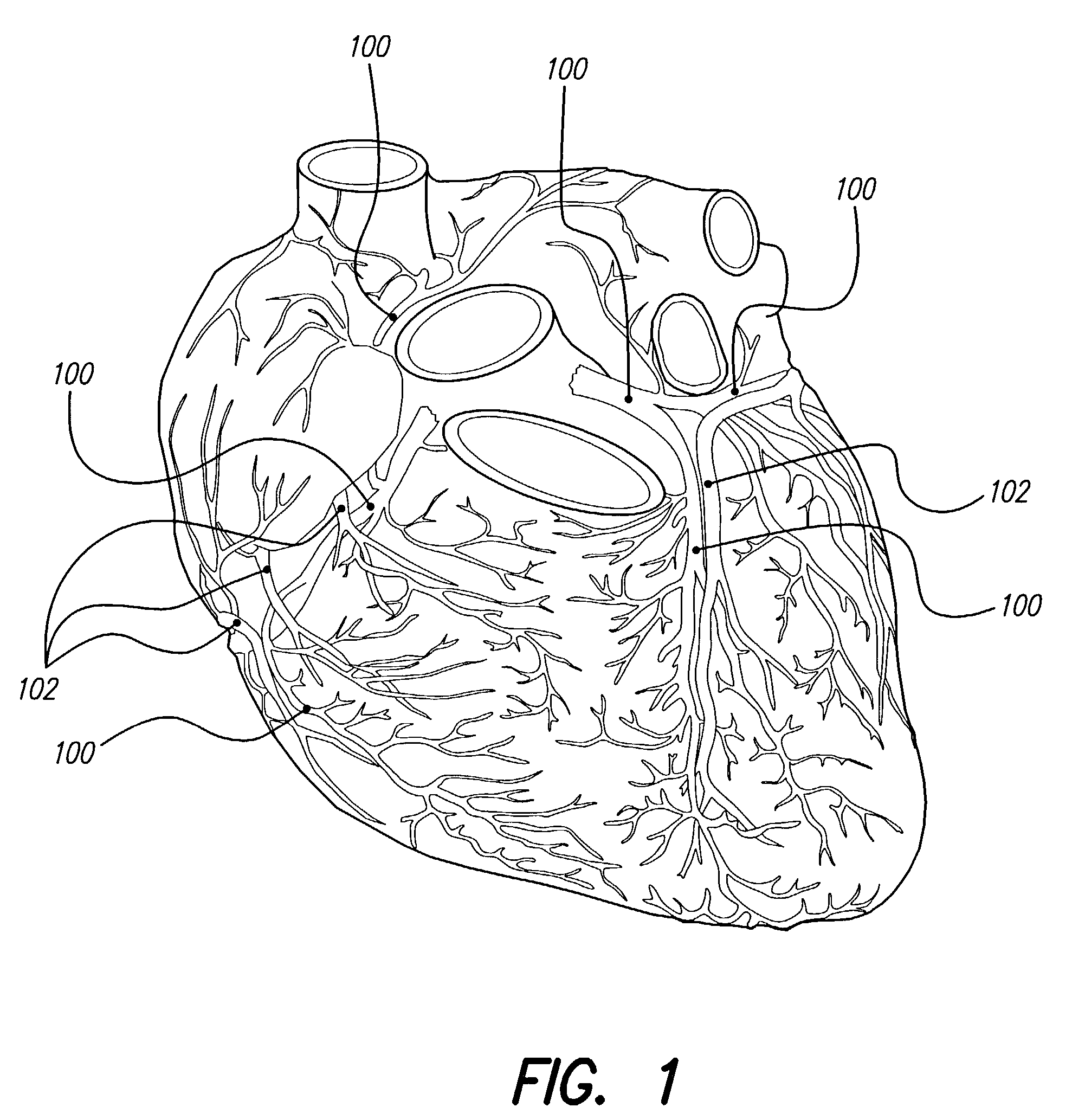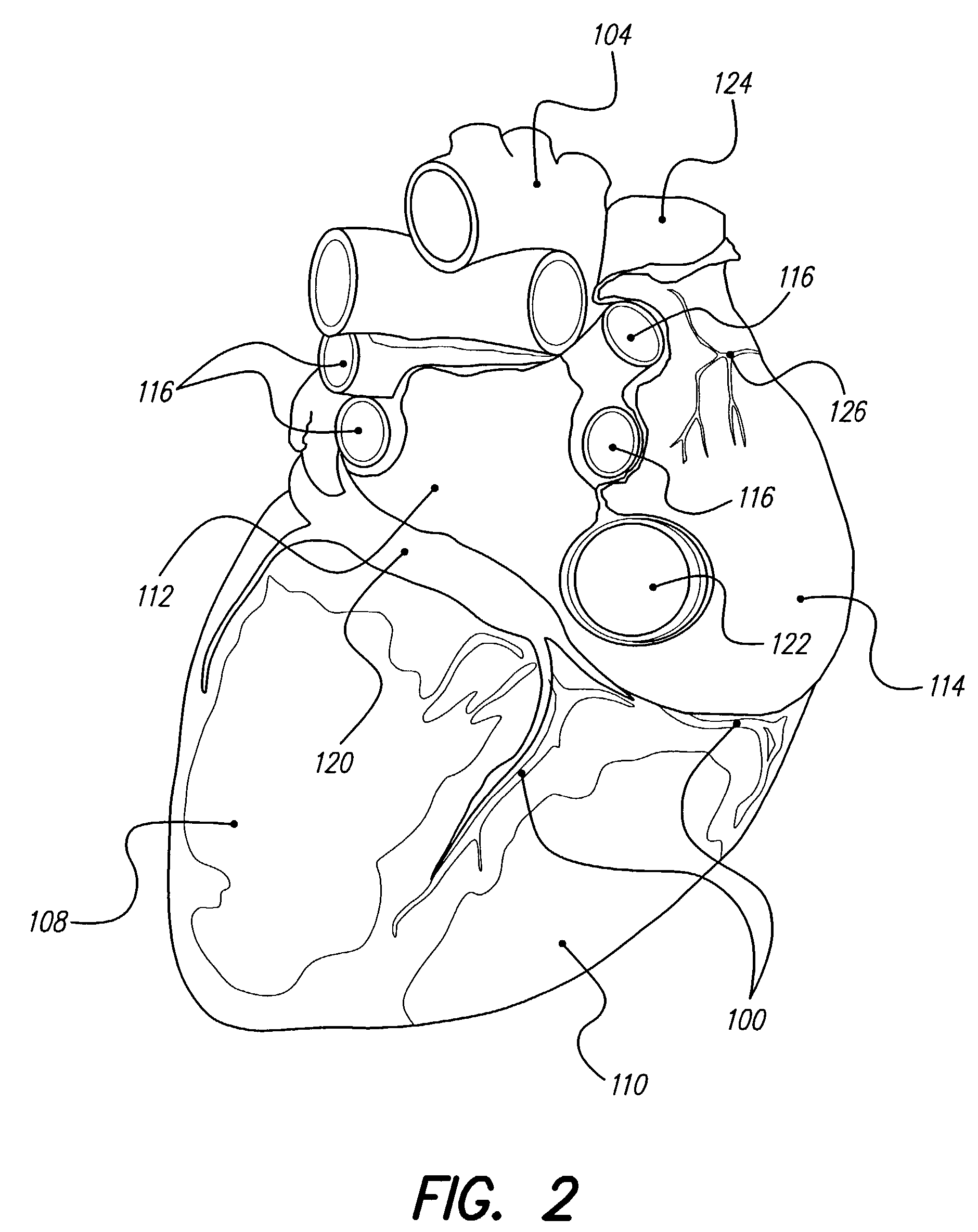Systems and methods for treatment of coronary artery disease
- Summary
- Abstract
- Description
- Claims
- Application Information
AI Technical Summary
Benefits of technology
Problems solved by technology
Method used
Image
Examples
Embodiment Construction
[0044]The following description is of the best mode presently contemplated for carrying out the invention. This description is not to be taken in a limiting sense, but is made merely for the purpose of describing the general principles of the invention. The scope of the invention should be determined with reference to the claims.
Acute Treatment with Medications
[0045]Acute treatment of ischemia may include either nitroglycerin (NTG) or intravenously administered magnesium sulfate (MSO4). MSO4 decreases the work required for breathing and reduces metabolic demand for oxygen. It also acts as a sedative to relieve anxiety and promote relaxation, and it may have a peripheral vasodilation effect, which contributes to relief of pulmonary edema. MSO4 increases venous capacitance, thereby decreasing venous return, left ventricular end diastolic volume, and myocardial oxygen consumption.
[0046]NTG has a direct effect on vascular smooth muscle, resulting in generalized vasodilation, including c...
PUM
 Login to View More
Login to View More Abstract
Description
Claims
Application Information
 Login to View More
Login to View More - R&D
- Intellectual Property
- Life Sciences
- Materials
- Tech Scout
- Unparalleled Data Quality
- Higher Quality Content
- 60% Fewer Hallucinations
Browse by: Latest US Patents, China's latest patents, Technical Efficacy Thesaurus, Application Domain, Technology Topic, Popular Technical Reports.
© 2025 PatSnap. All rights reserved.Legal|Privacy policy|Modern Slavery Act Transparency Statement|Sitemap|About US| Contact US: help@patsnap.com



